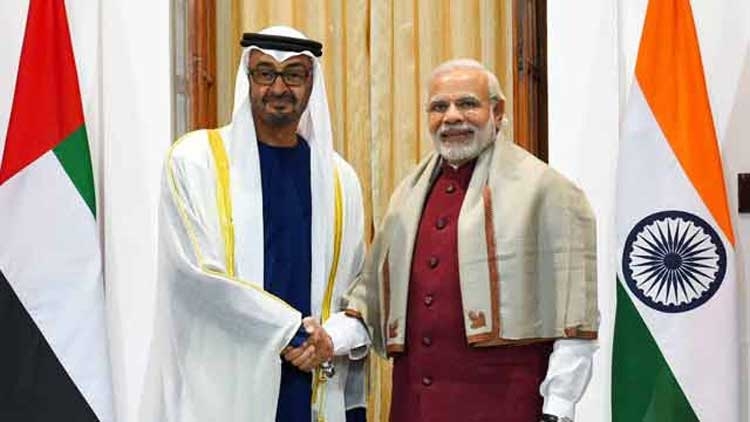
UAE and Indian leaders
In a landmark development, India and the United Arab Emirates (UAE) have signed a groundbreaking trade agreement that could have far-reaching consequences for the global financial landscape. The deal, stipulates that the two nations will conduct bilateral trade using Indian Rupees instead of the traditional US Dollar. While this pact represents a significant stride in strengthening economic ties between India and the UAE, it also poses potential dangers for the US Dollar’s hegemony as the world’s dominant reserve currency.
The trade agreement, signed by high-ranking officials from both countries, aims to foster closer economic cooperation and bolster trade volumes. By conducting business in Indian Rupees, both India and the UAE hope to reduce currency exchange risks, promote bilateral trade, and enhance financial stability in the region. This move comes as part of a broader trend among several countries to move away from relying solely on the US Dollar in international trade.
One of the primary concerns for the US Dollar is its status as the world’s primary reserve currency. For decades, the Dollar has enjoyed unrivaled global acceptance, which has bestowed significant advantages upon the United States, including lower borrowing costs and increased influence over the global financial system. However, with the India-UAE trade agreement now embracing the Indian Rupee, the Dollar’s supremacy could be challenged.
The potential risks the US Dollar may face as a result of this agreement are multi-faceted. Firstly, reduced demand for the Dollar in transactions between India and the UAE could lead to a gradual depreciation of the currency’s value on international markets. A decrease in demand for the Dollar might trigger higher borrowing costs for the US government and American corporations, impacting their ability to finance deficits and invest in economic growth.
Secondly, if more countries follow suit and opt to conduct bilateral trade in their national currencies, the Dollar’s position as the global reserve currency could be further weakened. Other nations might perceive the risks associated with the Dollar’s dominance, such as the influence of US monetary policy on their economies, and may seek to diversify their reserve holdings. This shift could undermine the Dollar’s stability and could lead to a broader decline in its value against other major currencies.
Moreover, the UAE’s decision to conduct trade in Indian Rupees could potentially signal a larger movement towards alternative currencies in the Middle East and beyond. As the UAE is a key player in the Gulf Cooperation Council (GCC), other member countries might be influenced to adopt similar measures, creating a ripple effect that weakens the Dollar’s centrality in the region.
However, it is essential to note that the transition away from the Dollar will not happen overnight. The US Dollar’s prominence is deeply entrenched in the global financial system, and international markets have long relied on its stability. Additionally, the Dollar remains the most liquid and widely accepted currency for cross-border transactions, giving it a formidable advantage.
While the India-UAE trade agreement certainly presents potential risks for the US Dollar, it also highlights the shifting dynamics of the global economy. As the world becomes more interconnected, countries are seeking ways to protect themselves from currency volatility and geopolitical uncertainties. As such, the path ahead for the Dollar will depend on how effectively the United States responds to these evolving economic landscapes and whether it can maintain its standing as a trusted and stable reserve currency.
In conclusion, the trade agreement between India and the UAE to conduct business in Indian Rupees marks a significant step in reshaping the global financial system. The US Dollar’s status as the world’s dominant reserve currency faces potential challenges as more countries explore alternative currencies for their trade transactions. Nevertheless, the long-term impact on the Dollar will hinge on various factors, including how the United States adapts to these emerging trends in international trade and finance.
The Author is a social-economic commentator based in Kigali, Rwanda

